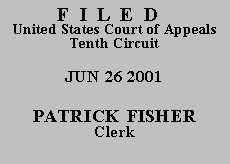

| UNITED STATES OF AMERICA,
Plaintiff-Appellee, |
|
| v. | |
| HAROLD KELLEY,
Defendant-Appellant. |
|
Defendant Harold Kelley appeals the four-level upward adjustment of his sentence under U.S.S.G. § 2F1.1(b)(1). We have jurisdiction under 18 U.S.C. §§ 1291 and 3742(a)(2) and affirm.
The facts are set forth in the plea agreement. In June 2000, Kelley and his roommate, who was a teller at the Credit Union Service Center, agreed to recruit a third party and "to defraud and to take and carry away $30,000 in funds from the American Airlines Employees Federal Credit Union." Record I, Doc. 26 at 4. The third party agreed to the scheme and made the $30,000 withdrawal, but gave the money to the police after he left the credit union. Kelley was charged with conspiracy to defraud a financial institution, in violation of 18 U.S.C. § 371, and defrauding a financial institution, in violation of 18 U.S.C. § 1344(1) and 2(a). He entered a plea of guilty to the conspiracy charge and the other count was dismissed. The plea agreement did not set forth a specific sentence, but provided: "The Court will impose a sentence within the appropriate guideline range, unless the Court finds there is a basis for departure because there exists an aggravating or mitigating circumstance of a kind, or to a degree, not adequately taken into consideration by the Sentencing Commission in formulating the guidelines." Doc. 26 at 7-8.
The presentence report recommended a four-level enhancement under U.S.S.G. § 2F1.1(b)(1) because Kelley intended to steal $30,000. Kelley objected to the presentence recommendation, arguing: "This was a sting. After [the third party] went to the authorities, there was no possibility that anyone would suffer a loss." Doc. 30 at 2. The district court rejected Kelley's argument, finding that
the act of the conspiracy was complete upon the hiring of [the third party]. Once the criminal act had been complete, at that point in time, which in fact is the charge to which the defendant has pled guilty, there was certainly a realistic possibility for the defendant to inflict the intended loss. The fact that subsequent to that point in time actions were taken by [the third party] that had the effect of thwarting that crime does nothing to change the conspiracy, the criminal act. At the point of the criminal act the intended loss was the amount of $30,000.
Record IV at 7.
We review the district court's determination of a U.S.S.G. § 2F1.1 loss under the clearly erroneous standard, but we review the factors the district court may properly consider de novo. United States v. Yarnell, 129 F.3d 1127, 1136 (10th Cir. 1997).
Kelley contends the district court should not have imposed the upward adjustment because the intended loss was impossible to inflict, citing United States v. Ensminger, 174 F.3d 1143 (10th Cir. 1999). He argues that the scheme was transformed into a sting, citing United States v. Galbraith, 20 F.3d 1054 (10th Cir. 1994), and that because the government controlled the operation and there was no possibility of a loss, the intended loss was "zero."
"[S]ting operations are designed [by the government] to tempt the criminally inclined." United States v. Connell, 960 F.2d 191, 196 (1st Cir. 1992). Here, the scheme was not designed by the government. It was designed by Kelley and his roommate, who recruited a third party who agreed to participate in the conspiracy. Kelley stipulated in the plea agreement that he and his roommate agreed "to defraud and to take and carry away $30,000 in funds." Doc. 26 at 4. When the conspiracy was formed, there was a possibility that the $30,000 would be lost.
In a conspiracy case, loss is calculated on the basis of all reasonably foreseeable acts and omissions of others in furtherance of the jointly undertaken criminal activity, that occurred during the commission of the offense of conviction, in preparation for that offense, or in the course of attempting to avoid detection or responsibility for that offense.
Schluneger, 184 F.3d at 1159 (internal quotation omitted). At the time Kelley recruited the third party to join the conspiracy, it was reasonably foreseeable that the loss would be $30,000.
AFFIRMED.
Entered for the Court
Mary Beck Briscoe
Circuit Judge
*.This order and judgment is not binding precedent, except under the doctrines of law of the case, res judicata, and collateral estoppel. The court generally disfavors the citation of orders and judgments; nevertheless, an order and judgment may be cited under the terms and conditions of 10th Cir. R. 36.3.